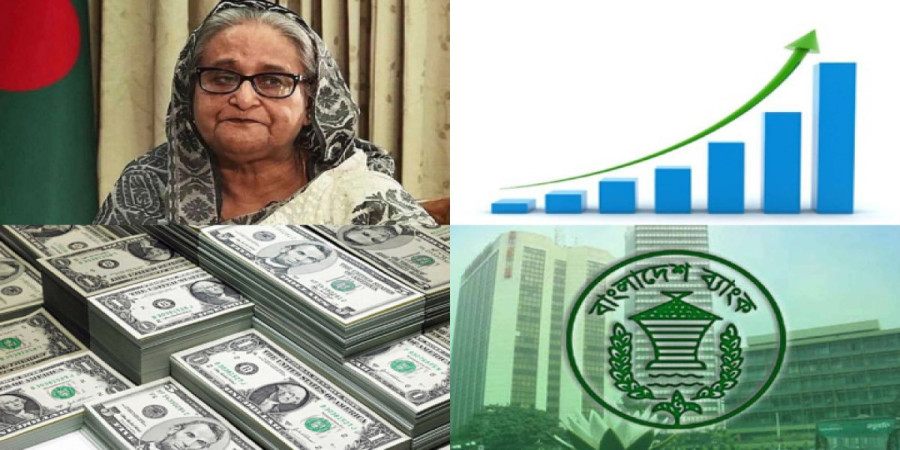
ছবি: Photo: Collected
The Awami League government, before leaving office, left Bangladesh with a staggering total debt of BDT 18.32 trillion as of June 30, 2024. This marks a sharp increase from the BDT 11.44 trillion recorded three years earlier in June 2021. Over the past three years alone, the government incurred an additional BDT 6.88 trillion in debt, which is nearly 1.5 times the average budget for the same period.
When the Awami League assumed power in January 2009, the country's total debt stood at BDT 2.77 trillion. Over the course of its tenure, spanning 15 years, the government added BDT 15.55 trillion to the nation’s debt.
A report by the Finance Division, detailed in the quarterly debt bulletin for the 2023-24 fiscal year, reveals that domestic debt exceeded BDT 10 trillion for the first time in June 2024, reaching BDT 10.20 trillion. In contrast, the external debt stood at BDT 8.12 trillion, nearly double the BDT 4.20 trillion recorded three years earlier.
Analysts have expressed concerns about the government's borrowing strategy, particularly with regard to foreign loans. According to economic experts, many of these loans were acquired without adequate negotiation or cost-benefit analysis, leading to higher liabilities for the nation.
The Finance Division's report shows that net borrowing for the 2023-24 fiscal year totaled BDT 1.57 trillion. This includes BDT 73,108 crore in domestic loans and BDT 83,896 crore in foreign loans. Of the domestic borrowing, BDT 89,100 crore was sourced from the banking sector, while non-bank sources like savings certificates showed a negative borrowing figure of BDT 37,116 crore.
The rising debt has also translated into increased interest payments, which have become a significant burden on the national budget. In the 2023-24 fiscal year, the government spent BDT 1.12 trillion on interest payments, exceeding the education budget of BDT 94,710 crore for the first time. This represents a 19% increase in interest payments compared to the previous fiscal year.
Economists and analysts are worried about the debt’s impact on Bangladesh’s economic stability. According to Dr. Mustafizur Rahman, a distinguished fellow at the Centre for Policy Dialogue (CPD), much of the foreign debt was acquired at higher interest rates, exacerbating repayment challenges. He also pointed out that inefficiencies and corruption in debt utilization have increased financial vulnerabilities.
Dr. Rahman noted that Bangladesh's debt-to-GDP ratio stood at 36.3% as of June 2024, up from 32.41% three years earlier. While the International Monetary Fund (IMF) considers a debt-to-GDP ratio of up to 55% to be acceptable, the low tax-to-GDP ratio of 8.2% and declining foreign exchange reserves pose significant challenges. Over the past two years, the country's reserves have halved, falling from USD 42 billion to USD 21 billion.
The bulk of domestic borrowing is through treasury bills, bonds, and sukuks, predominantly sourced from the banking sector. The government has also relied on non-bank sources such as savings certificates and provident funds. Meanwhile, external loans are primarily secured from multilateral institutions like the World Bank and the Asian Development Bank (ADB) and bilateral partners including Japan, China, Russia, and India. These loans were used mainly for project financing and budget support.
Analysts have highlighted the lack of effective debt management as a pressing concern. They argue that inefficient use of loans and inadequate oversight have resulted in suboptimal outcomes. They also caution that the growing debt burden, especially in foreign loans, could lead to significant repayment pressures in the coming years.
Despite the challenges, the Finance Division maintains that the debt-to-GDP ratio remains within acceptable limits. However, with an increasing reliance on borrowing and limited revenue generation capacity, experts urge the government to adopt a more strategic approach to debt management to avoid further economic strain.
repoter






